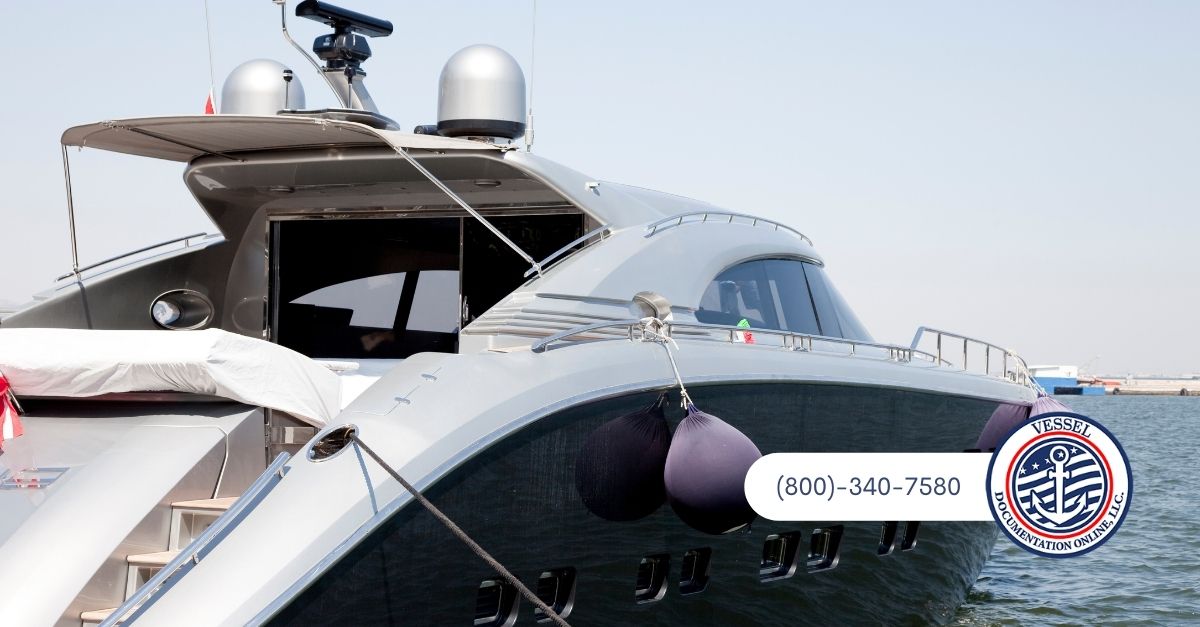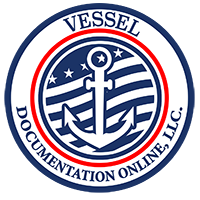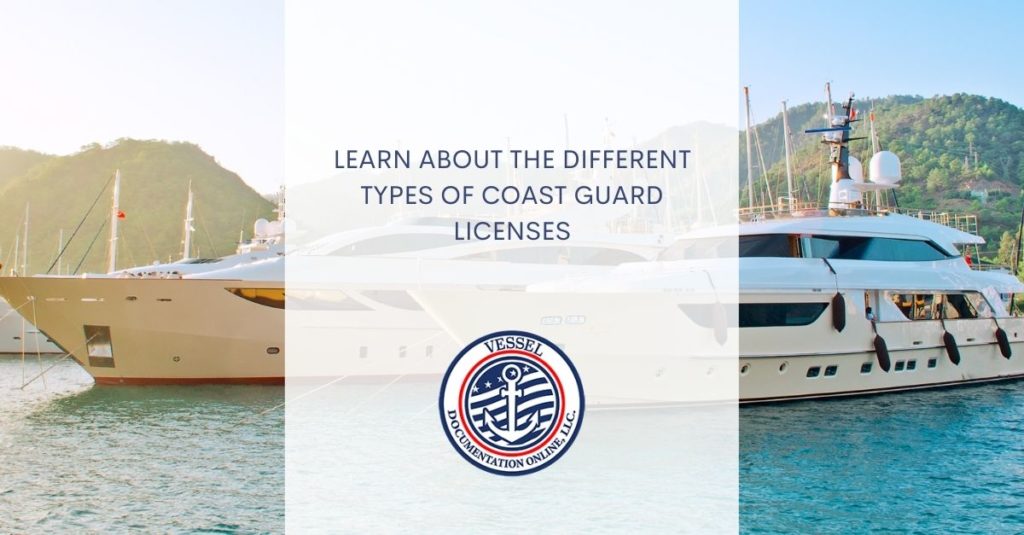Vessel owners need to be informed of the numerous types of Coast Guard licenses available.
The many sorts of permits available to vessel owners enable them to operate their boats in various ways and for a variety of reasons.
It is essential to understand the distinctions between the licenses to decide which license best fits your needs and circumstances.
This blog article will offer an overview of the many kinds of Coast Guard licenses available, as well as an explanation of what each license grants you the ability to accomplish.
By knowing the distinctions between these licenses, you will be able to make an educated choice about which one is the most appropriate for you.

OUPV (6-Pack) Captain’s License
It is possible to get a six-pack captain’s license, also known as an OUPV license, that permits the bearer to transport up to six paying passengers and crew members out on the water.
The OUPV/Six-Pack license is available in three different configurations: Inland, Great Lakes & Inland, and Near Coastal (see below).
When operating a boat above 21 feet in length in the United States, a person must have a USCG Captain’s License or higher to be permitted to do so.
The United States Coast Guard in three levels issues captain’s licenses:
- One, which is required to be able to operate any boat over 21 feet in length;
- Two, which allows the license holder to operate a boat up to 100 feet in length that can carry up to six passengers for hire and crew; and
- Three, which allows the boat operator up to 100 feet in length, can carry up to six passengers for hire and crew.
Requirements
If you want to earn an OUPV (6-pack) Captain’s license and work as a Captain, the prerequisites for each kind of license are below.
Depending on your level of expertise and educational background, you may want to browse for more in-depth publications at the US Vessel Documentation Center, which is just down the road from us.
To be eligible for an ocean-going uninspected water vessel (OUPV) license, you must have a minimum of 360 days of experience on inland or near-coastal waterways according to flsenate.gov. This experience may be on your boat or the boat of another person.
Three hundred and sixty days of sailing experience, including at least 90 days offshore, are required.
Masters Upgrade as One of the Types of Coast Guard Licenses
Are you looking to obtain your Master’s License? The highest level of a recreational driver’s license, a master’s, is required.
There are two basic ways to get your Master’s license: For the 100-ton license, you need 360 days of experience on any form of watercraft as a helmsman, mate, or engineer since you were 16 years old.
In addition, the USCG is required by law to do a thorough background check with the assistance of your local police department.
Only if your job necessitates the use of such a vast vessel may you apply for this specific sort of license: 25-ton.
In order to get this license, you must meet the following conditions: As a captain, you must have at least 360 days of cumulative experience since you were 16 years old in command and as the first mate on boats that are either inspected and certified to transport 11 passengers or uninspected and licensed to carry no more than six passengers.
It’s either the sixth-pack course or one of the following training programs that you must complete:
- Exam with a certificate from the Vessel’s Safety Education Bureau
- Coast Guard-approved boating safety course
- An authorized course provided by a State Boating Law Administrator Training Program
You must provide proof of at least 80 hours of training in cutting-edge fire fighting methods to apply for this position.
What Is The Difference Between OUPV And Master?
If you are new to the maritime sector and want to begin working as a fishing boat captain, you must understand the types of Coast Guard licenses and the distinction between OUPV and Master Licenses.
Although the Coast Guard gives both OUPV and Master licenses, there is a distinction between the two titles.
Even while both an OUPV and a Master’s license enable you to captain a charter boat with six or fewer paying passengers, the most significant distinction between the two is the maximum number of paying passengers permitted.
A captain who has an OUPV license is limited to a maximum of six paying passengers for each charter voyage.
A captain with a Master’s license, on the other hand, may carry up to twelve paying passengers in San Diego waters and almost twenty-six paying passengers in Orange County waters on any charter.
It makes little difference whether you wish to earn a Master License or an OUPV License; the fundamental criteria and limits for acquiring your captain’s license are very identical.




